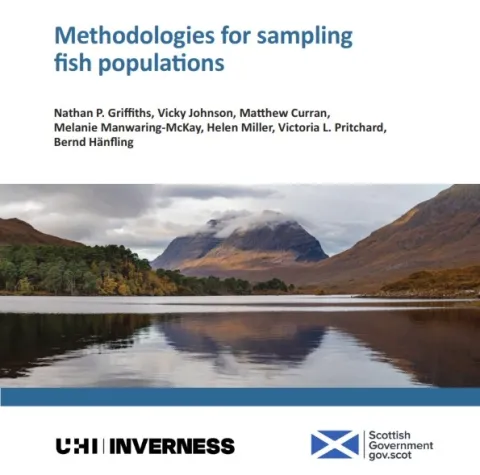
Scotland’s freshwater lochs are complex ecosystems teeming with life. They are home to an array of fish species, which are crucial to the ecological health of these habitats. Effectively monitoring these fish populations in such vast water bodies poses a challenge that requires innovative solutions and effective collaboration. As pressures from human activities such as large-scale hydro-electric developments mount, the monitoring, understanding and safeguarding of Scotland’s freshwater fish is increasingly important.
Recognising the importance of effectively monitoring fish in Scottish lochs, a recent CREW project aimed to evaluate current sampling methodologies and produce guidelines to support the implementation of suitable assessment programmes. Building from information gathered by literature review, an expert-led workshop was held to ensure that developed guidelines were practical for real-world application. Organisations represented at the workshop included Natural England, NatureScot, Scottish Environmental Protection Agency, Scottish Fisheries Coordination Centre, the Atlantic Salmon Trust, Scottish Government Marine Directorate, Hull International Fisheries Institute, Trex Ecology Ltd., two fishery boards (Ness District and Cromarty Firth), and several universities (University of Glasgow, UHI Inverness and University of Stirling). Throughout the project there was a keen focus on understanding species abundance across space and time, and fulfilling regulatory requirements as several Scottish freshwater fish species such as the Atlantic salmon and European eel have legislative protection.
The findings revealed a diverse range of sampling methodologies, ranging from traditional (i.e. gill netting) to more modern (i.e. environmental DNA) techniques. Overall, four primary sampling methods, complemented by six supporting techniques, emerged as key tools in the fish monitoring toolkit. Stakeholders emphasised the need for high quality data and reproducibility, prioritising these factors over ease of application, cost and processing time. As such, there is no ‘one size fits all’ approach to freshwater fish monitoring in Scottish lochs. Careful consideration to determine the most suitable combination of methods for each unique water body and monitoring scenario is crucial. A monitoring framework, outlined in the project report, can ensure that appropriate sampling methods are selected and that surveys are designed effectively to meet data requirements.
From general ecological considerations to site-specific nuances and long-term outlooks the project successfully offered valuable insights into the complexities of freshwater fish monitoring. By adopting a unified approach guided by science and stakeholder collaboration, Scotland can significantly move towards sustainable fish population management and conservation. This is critical for effective environmental stewardship and ensuring a thriving ecosystem for generations to come.
Thank you to the Research Team at UHI Inverness and to all stakeholders who contributed to the project.
Click here to see the full project outputs.
1Environmental stewardship refers to the responsible use and protection of the natural environment. It involves active participation in conservation efforts and sustainable practices to ensure the well-being of the environment for current and future generations. This concept emphasises the need to balance human needs with environmental preservation.